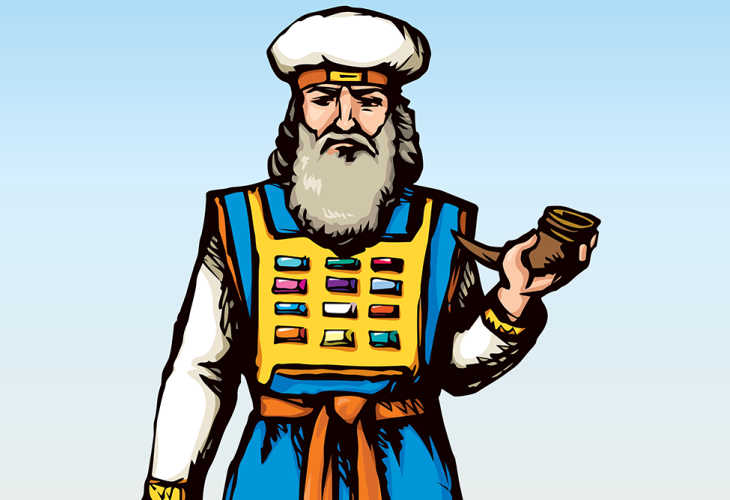Facts in Judaism
Atoning for Sins: Everything You Didn't Know About the Priestly Garments
Why did the kohen (priest) need to remove his belt after completing his service? How were answers received through the Urim and Tumim? And what's the problem with wearing stained priestly garments? Everything you (perhaps) didn't know about the priestly vestments
 (Photo: shutterstock)
(Photo: shutterstock)The Torah gives us precise details about the garments worn by the kohen gadol (high priest).
The avnet (belt) was 32 cubits long, which is taller than a 5-story building! The kohen would wrap it around his waist many times.
The mitznefet (turban) was exactly half as long as the avnet (16 cubits). This was also a substantial length, and the kohen gadol wrapped the mitznefet around his head many times. An ordinary kohen wore a different type of hat (a migba'at) as opposed to a turban.
The priestly garments contained a mixture of shatnez (a mixture of fibers forbidden by Torah law)! Though ordinarily it is forbidden to wear garments that contain shatnez, a positive commandment overrides a negative one, and the Torah's commandment that obligates the kohen to wear an avnet overrides the prohibition.
As soon as the kohen completed the Temple service, he needed to remove the avnet to avoid transgressing the prohibition of shatnez. The Talmud discusses whether kohanim are permitted to place their folded garments under their heads while sleeping, or if this is also forbidden on account of the prohibition of shatnez.
The tzitz (headplate), which the kohen gadol wore on his forehead, atoned for "hidden impurity," which refers to impurity deep in the ground that nobody knows about, creating a situation in which someone might pass over it and unknowingly become impure.
The priestly garments also atone for transgressions: the ketonet (tunic) atones for bloodshed, the michnasayim (pants) atone for sexual immorality, the ephod atones for idolatry, the mitznefet atones for haughtiness, the avnet atones for impure thoughts, the choshen (breastplate) atones for perversion of justice, the me'il (robe) atones for slander, and the tzitz atones for brazenness.
The priestly garments had to be kept completely clean. Even though the Temple service included slaughtering animals and sprinkling blood, among other things, the garments needed to stay completely clean. Even a small stain was problematic and invalidated the service.
When the priestly garments became worn out, they weren't discarded. Instead, they were made into wicks that were used to light enormous lamps during the simchat beit hashoeva (water drawing celebration on the holiday of Sukkot). The Jerusalem Talmud notes that these lamps were so bright and provided so much light in the city that a woman could sort rice at night by their light.
The choshen was a special garment that contained 12 precious gems corresponding to the tribes of Israel. Each stone had its own special properties. The choshen also contained the Urim and Tumim, through which the kohen gadol could receive guidance and direction for different questions and dilemmas. In response to a question, the letters engraved on the stones (the names of the tribes) would light up, and the kohen gadol needed to decipher the message. (The Sages famously relate that Eli the kohen gadol mistakenly assumed that Channah was drunk because he didn't decipher the letters correctly. The Hebrew letters 'shin,' 'kaf,' 'resh,' 'hey' lit up and he assumed that this indicated that Channah was drunk - shikora - even though she was really "kesheira" - worthy.)

